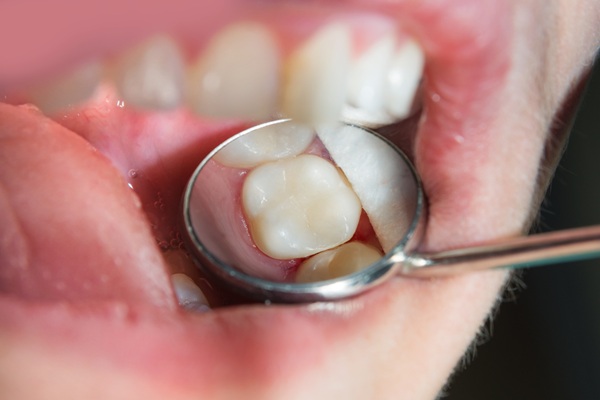How to Know if Composite Fillings are Right for You

Composite fillings are among the most commonly used materials for restoring teeth affected by cavities or minor damage. These dental fillings repair damaged teeth and restore their function and appearance. While there are several types of fillings besides composite ones, patients may be unsure which one is right for them. Fortunately, a dentist can help.
What are composite fillings?
Composite fillings are made from a tooth-colored resin material that blends seamlessly with natural teeth. This makes them an excellent choice for patients seeking an aesthetically pleasing solution for minor dental damage or cavities. Composite fillings are applied in layers, each hardened using a special light. Once fully set, the dentist shapes and polishes the filling to restore the tooth's natural look and functionality.
These highly versatile fillings can be used on both front and back teeth. They are particularly well-suited for areas of the mouth visible when smiling, as their color-matching properties make them virtually undetectable.
Advantages of composite fillings
Patients often choose composite fillings because of their many benefits:
- Blends in with other teeth. Unlike silver amalgam fillings, which can stand out, composite fillings match the color of natural teeth to provide a discreet and seamless restoration.
- Preserves tooth structure. Composite fillings bond directly to the tooth structure, allowing dentists to remove less healthy tooth material during preparation and conserving more of the natural tooth.
- Durability. While not as strong as metal fillings, composite fillings are durable enough to handle the biting forces in small to medium cavities.
- Quick and minimally invasive procedure. Composite fillings are typically completed in a single visit, requiring minimal tooth preparation and no lengthy recovery time.
While beneficial, composite fillings may not be the best choice for all patients. During a consultation, we can determine which treatment option will effectively meet the patient's oral health needs. This way, the patient will be better equipped to maintain their oral health without issue.
Situations where composite fillings work best
Composite fillings are a great option for a variety of dental issues, but they are particularly suitable in the following situations:
Small cavities or tooth decay
Composite fillings are commonly used to treat cavities in both front and back teeth. Their tooth-colored appearance makes them ideal for visible areas, while their durability ensures they perform well in areas exposed to moderate chewing pressure.
Minor chips or cracks
Composite fillings can provide a quick and effective solution for patients with minor chips or cracks in their teeth. The resin material is applied directly to the damaged area, restoring the tooth’s structure and appearance.
Replacing old fillings
Patients looking to replace older fillings, such as amalgam, often choose composite materials for a more natural-looking result. Composite fillings provide the same restorative benefits while improving the smile's aesthetics.
How to determine if composite fillings are right for you
The decision to choose composite fillings depends on several factors, including the location and size of the cavity, your aesthetic preferences, and more. If maintaining a natural appearance is a priority, composite fillings blend seamlessly with natural teeth and are ideal for repairing visible areas of the mouth. In most cases, composite fillings are best suited for small to medium cavities. In the cases of larger cavities or restorations on heavy chewing areas in the mouth, patients may require a more durable option.
Patients who maintain good oral hygiene and avoid habits like grinding their teeth are more likely to benefit from the durability of composite fillings. A dentist may also recommend wearing a nightguard if bruxism (teeth grinding) is a concern. While composite fillings may be more expensive than amalgam, their aesthetic benefits often make them worthwhile investments for many patients. Composite fillings have a shorter lifespan than other types of implants but are still durable and effective with proper care.
A patient can review these factors with the dentist and determine if composite fillings are the right choice. Along with that, a dentist will ensure the option meets the patient's needs and provides a suitable treatment for the damaged tooth.
See if composite fillings are right for you
Composite fillings offer an attractive and effective solution for patients seeking to restore damaged or decayed teeth. Their aesthetic appeal, versatility, and ability to preserve natural tooth structure make them popular for many dental restorations. By consulting with a trusted dentist, patients can determine if composite fillings are the right option for oral health, ensuring a durable and beautiful smile for years. For more information, schedule a consultation visit today at Ohio Cosmetic Dentists.
To schedule a consultation, request an appointment on our website at https://www.ohiocosmeticdentists.com or call Ohio Cosmetic Dentists at (614) 503-5240 for an appointment in our Columbus office.
Check out what others are saying about our dental services on Yelp: Composite Fillings in Columbus, OH.
Recent Posts
While damaging a dental filling can be painful and problematic, it is also manageable with the right steps. A dental filling can restore the structure of a tooth after decay or minor damage. However, fillings can sometimes chip, crack, or even fall out due to daily wear, biting on hard foods, or unexpected trauma. Proper…
Dental fillings can restore teeth with minor fractures or cavities. Your general dentist can use them to enhance jaw functions by evening out dental surfaces. These restorations can also improve the appearance of the affected teeth. Understanding how dental fillings work can help you prepare well for your next appointment.This meeting is an essential first…
Think you might need a dental filling? Read on to learn more about this treatment. Tooth decay is one of the most common oral health conditions. When untreated, it can result in serious dental problems including tooth loss. Dental fillings restore the structure and function of the affected teeth. Knowing the importance of dental fillings…
When individuals experience cavities and other problems that affect their teeth, dentists use a dental filling to repair and restore them. This helps preserve damaged teeth and prevents their loss. Dental fillings are the most common type of dental work: according to the Centers for Disease Control and Prevention, over 90% of Americans have had…


